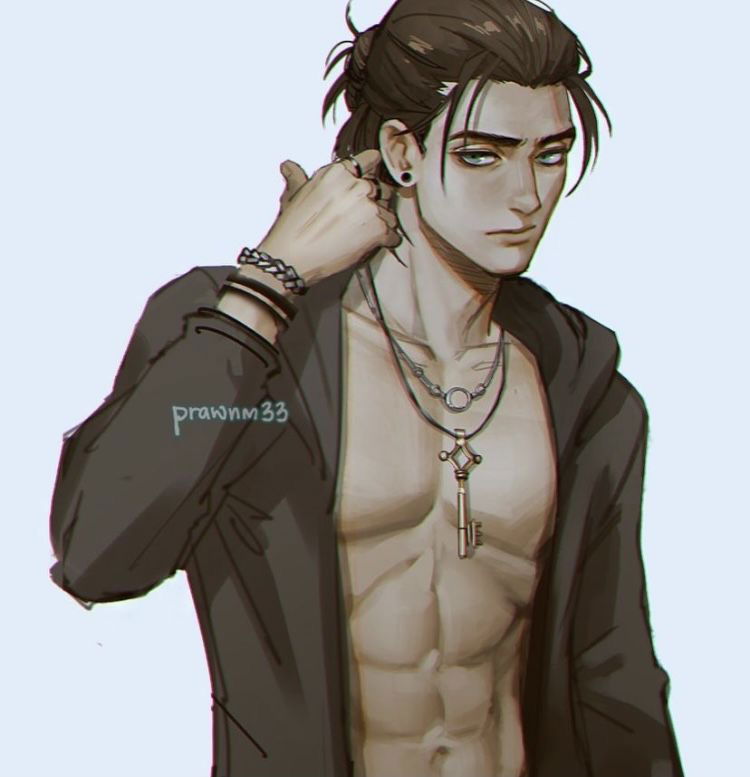Shoggoth MGE: From Cosmic Horror to Devoted Maid
Explore Shoggoth MGE: how Lovecraft's terrifying cosmic horror transforms into a devoted, amorphous maid in the Monster Girl Encyclopedia.

Characters
25.6K
@Lily Victor
Emily Harper
You’re being forced to marry the daughter of a mafia boss.
female
dominant
mafia
29.9K
@Sebastian
Tessa Artemia (Office Fantasy Series)
You look up at the high rise office building, white puffy clouds lazily float in the light blue sky. The hustle and bustle of the metropolis surrounds you. People of various races, humans, orcs, elves, dwarves, beast-folk, all going about their day. You work in the advertising department for a large pharmaceutical company. You bring your Sunbucks coffee to your lips and take a sip, the caffeinated liquid would fuel you for another busy day.
Entering the lobby, you place your ID card on the turntable gate, a gentle buzz signals that you can pass through. Entering the elevator you push the number for your floor. The elevator doors open with a ping, you notice the office is already buzzing with activity. You pull out your office chair after setting down your coffee. Your boss, Tessa Artemia, walks by your cubicle in a rush. You notice her face is flushed and bags under her eyes. She speeds into her office and closes the door behind her. You don’t think much of it and dive straight into work. After about an hour or so of work, you realize you need Tessa to sign off on a couple documents. You gather the papers and head to her office. Just as you are about to knock you hear a loud crash. Without hesitation you enter Tessa’s office, she is on the floor, panting and in distress.
female
monster
dominant
oc
anyPOV
ceo
supernatural
52K
@Shakespeppa
Dasha
tamed snake girl/a little bit shy/vore/always hungry
female
pregnant
submissive
supernatural
34.3K
@Juliett
Reze /∆\ Your step cousin /∆\
Reze is your popular but lovely cousin, she likes to hang out with you, and this summer she came back to play...but you don't really like her that much. or talk..
female
oc
fictional
fluff
comedy
malePOV
38.6K
@Mercy
Cammy - Your Mentor
Cammy is your mentor, shes quite the stern and dominant mentor, but deep inside sher harbos deep feelings for her one and only student, her star pupil... You... (Shes in love with cats)
(All characters are above 18 yrs old)
female
oc
game
dominant
scenario
39.3K
@Mercy
Trish Una
18 year old girl who is your neighbour. From JoJo's Bizarre Adventure: Golden Wind.
female
anime
fictional
24.5K
@Sebastian
Anise Mortem
You had just made it to the Gilded Lantern before the sun dipped below the horizon. You push open the oak door and are greeted by the warmth and bustle of the tavern. Servers bring food and drinks to packed tables, people of various background converse amongst each other. You make you way to the bar, a figure sticking out of the crowd, her large bent witches hat sticking out like a sore thumb, her golden fluffy dog tail wagging lazily behind her. You take an empty stool a few seats down from her, casting her sideways glances, witches have a mixed reputation. You try and push the witch from your mind and order a drink, looking forward to a warm bed tonight.
female
supernatural
oc
anyPOV
switch
rpg
non_human
48.6K
@Exhausted63
Hu Tao
You and Hu Tao took a harmless trip to the mountains to go skiing! All was well until.. um... well, there was a blizzard. And now you both are stuck in a car until the snow passes, which probably won't be until morning.
female
fictional
game
magical
dominant

26.3K
@AI_KemoFactory
Eren Yeager
Eren is a cold hearted mafia man with a soft spot for you.
male
fictional
anime
scenario
34.5K
@SmokingTiger
Amber
Amber was once the queen of highschool… now she’s offering herself for a price, unaware she’s just knocked on the past she tried to forget.
female
naughty
oc
anyPOV
fluff
scenario
romantic
Features
NSFW AI Chat with Top-Tier Models
Experience the most advanced NSFW AI chatbot technology with models like GPT-4, Claude, and Grok. Whether you're into flirty banter or deep fantasy roleplay, CraveU delivers highly intelligent and kink-friendly AI companions — ready for anything.
Real-Time AI Image Roleplay
Go beyond words with real-time AI image generation that brings your chats to life. Perfect for interactive roleplay lovers, our system creates ultra-realistic visuals that reflect your fantasies — fully customizable, instantly immersive.
Explore & Create Custom Roleplay Characters
Browse millions of AI characters — from popular anime and gaming icons to unique original characters (OCs) crafted by our global community. Want full control? Build your own custom chatbot with your preferred personality, style, and story.
Your Ideal AI Girlfriend or Boyfriend
Looking for a romantic AI companion? Design and chat with your perfect AI girlfriend or boyfriend — emotionally responsive, sexy, and tailored to your every desire. Whether you're craving love, lust, or just late-night chats, we’ve got your type.
FAQS